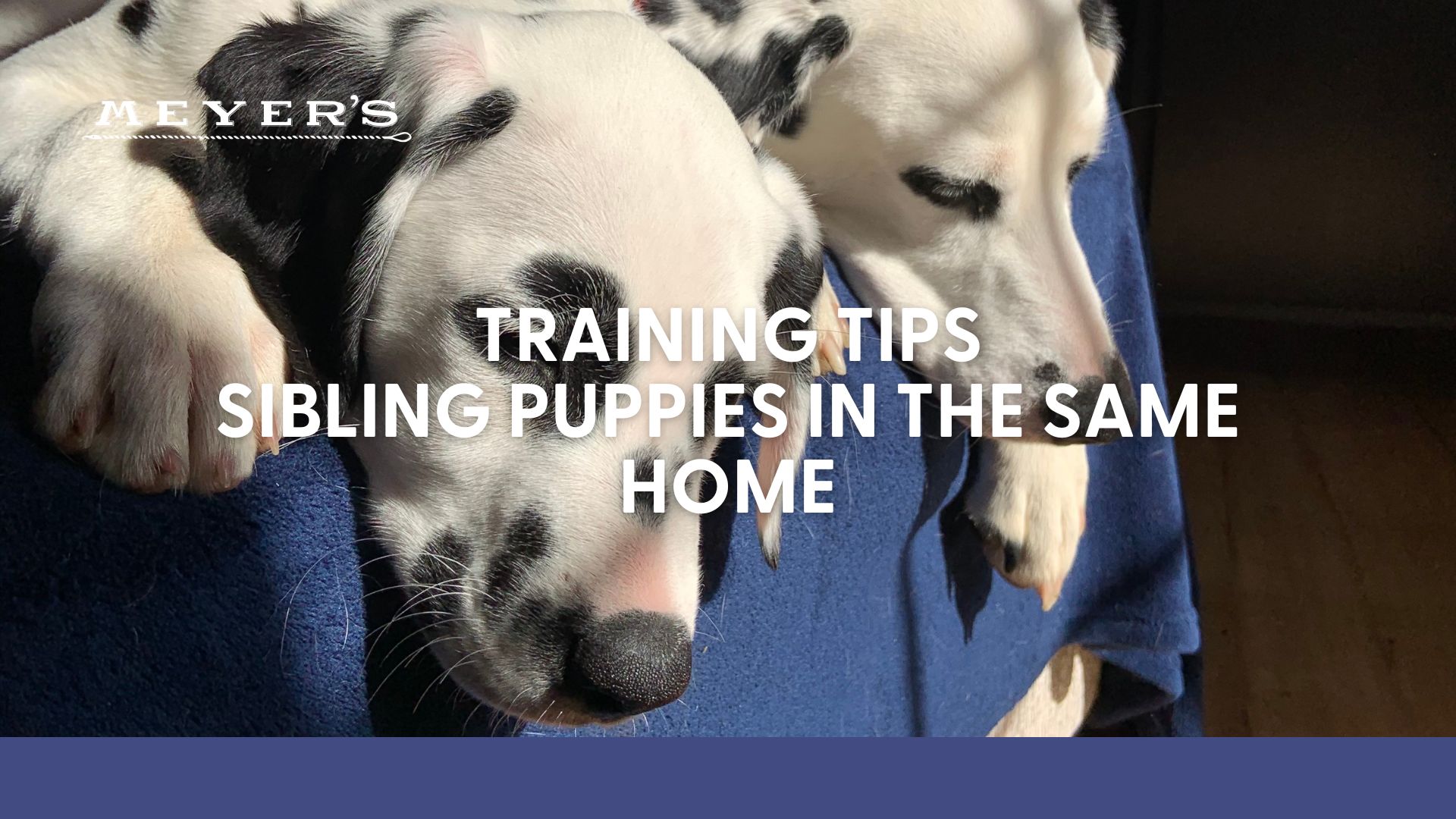
Sibling Puppies in the Same Home
Congratulations on your new puppies! Adopting sibling puppies is exciting but it doesn’t come without its challenges! The main problem with adopting sibling puppies is that they are going to bond with one another over you.
They have already been bonding for months together with their mother, and they are going to spend lots of time together, especially when you aren’t home.
This is a problem because the bond they have with one another can diminish the bond they have with you. This can make them much more difficult to train.
They also feed off one another’s energy, which makes it much more likely for them to get in trouble together.
Add to this that they are pack animals, and in addition to bonding you can expect them to fight, as it is common to fight for dominance within the pack.
Your biggest challenge and most important training task with siblings are to get them to bond with you rather than their sibling. They need to look to you to meet their needs. Be their teacher, comforter, leader, and playmate.
Here are some tips on how to raise sibling puppies:
Invest in crate training
Crate training is one of the most effective training tools. While some people consider it cruel to confine a pup in this way, this is looking at it from a human rather than a dog perspective.
Not only does the crate contain them, but it also gives them a secure place to call their own, where they can retreat when things get stressful.
They are also less likely to get stressed out by you overreacting to any accidents or mishaps. So, in this way, the crate can make you both feel better.
It also means the puppies can be near you, inside their crates, when they also have to be restricted. It is much less traumatic for them than locking them away in another room “out of sight.”
When it comes to sibling puppies, there will be many times that you will need to keep them apart. Crates (one each) are the most effective and human way to keep the puppies apart without causing them serious anxiety.
Each time you take a puppy out of its crate take it outside to potty before you get to work/play activities.
Let them sleep separately
You’ve seen litter puppies: they love sleeping together in a big pile. It is adorable! But when you bring your litter puppy siblings home, that needs to end.
Sleeping together forms a deep and unbreakable bond, which is lovely but will make them impossible to control when they are together and undermine their ability to bond with you and the other members of your household.
Sibling puppies should sleep separately.
You might not want to do this from day one. Being introduced to a new home can already be a challenging and scary experience, so ripping them away from their sleep buddy at the same time just seems cruel.
But you should have them sleeping separately within two weeks of bringing them home.
If they are sleeping in crates, as we recommend, you can start with the crates next to each other and then slowly move them further apart.
Spend time with each puppy alone
Don’t do everything with your puppies together. This will only reinforce their strong and exclusive bond with one another and make it more difficult for them to bond with you and other human family members.
While you will certainly do things together, you will also want to do things alone with each of them. You should maintain this until they are at least one year of age, and long beyond this.
This means walking them separately, playing with them separately, taking them to the vet separately. This is why sibling puppies are a huge time investment.
They should also have their own possessions. They should never share leashes, bowls, or toys.
You should even feed them separately, in separate parts of the home, or one at a time with the other waiting in the crate.
Training ideas for one-on-one time
Try to give each puppy one-on-one time everyday so that they form a strong bond with you and will listen to your commands. Here are some ideas on how to bond with your puppy during one-on-one time. These sessions don’t have to be long and should not exceed 15 minutes.
These training ideas require a lot of crate time and separation from each other, it will be a lot of work.
- 3x each day take puppy from crate to separate area and engage in playtime. This is one-on-one time. Use toys to play fetch or tug. Toss treats for them to look for, call them back to you and treat. Be creative but keep in mind that being with you needs to be rewarding. Keep it simple. Return to crate with a frozen Kong*.
- 1x each day take the puppy from the crate and do quiet grooming activities. Brushing, teeth cleaning, handling feet and nail care, ear cleaning. Back to crate with Frozen Kong.*
- After 2 or 3 days substitute a training session for one of your three playtimes. Work on leash walking, sits, downs, turns, watch me, tricks. Again, be creative and make it fun. Return to crate with a Frozen Kong.*
It is recommended to give the crated puppy a frozen Kong treat to keep them busy while you are interacting with the other puppy.
You will need 4 or 5 appropriately sized Kong’s per puppy. Figure out how much food they eat per day and divide between the number of Kong’s you have. Moisten food and pack it into the Kong then freeze. I would feed them this way on the last meal they eat together so they aren’t stressed and learn that the Kong meal is fun.
Other tips
Here are some other helpful tips for raising sibling puppies:
- Invest in professional training – this is great to develop their bond with you and to socialize with other dogs, try to have them in separate classes if you can.
- Use their names – this establishes independence and lets them know which one of them you are calling.
- Monitor domineering behavior – step in if one becomes excessively dominant, as it can result in an unhealthy relationship between the two that can very easily result in negative behavior
- Socialize with older dogs – It is not uncommon to hear people say that puppies will socialize and teach one another. But this is a case of the blind leading the blind, and you just end up with two misbehaving pups. However, pups do learn good habits and socialization from older dogs.

